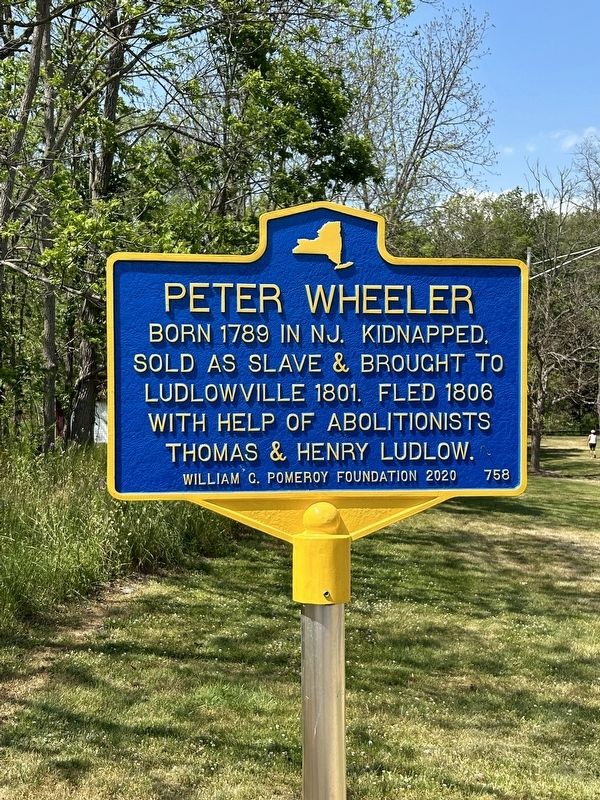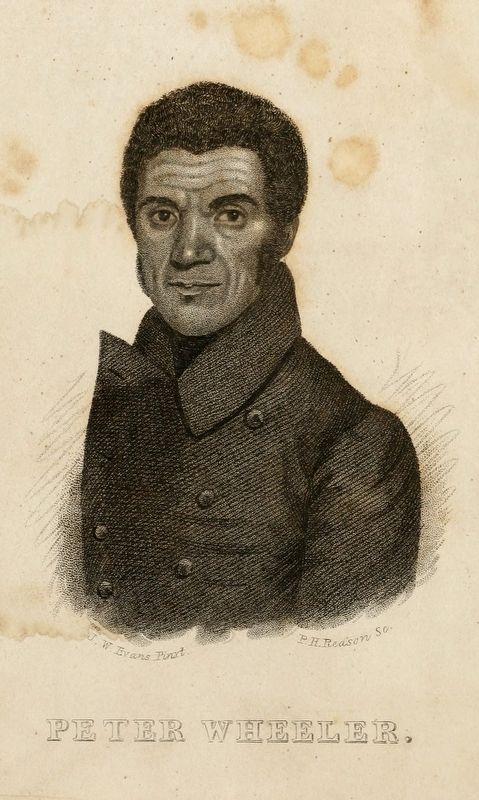Ludlowville in Lansing in Tompkins County, New York — The American Northeast (Mid-Atlantic)
Peter Wheeler
Erected 2020 by William G. Pomeroy Foundation. (Marker Number 758.)
Topics and series. This historical marker is listed in these topic lists: Abolition & Underground RR • African Americans. In addition, it is included in the William G. Pomeroy Foundation series list. A significant historical date for this entry is January 1, 1789.
Location. 42° 33.226′ N, 76° 32.241′ W. Marker is in Lansing, New York, in Tompkins County. It is in Ludlowville. Marker is at the intersection of Ludlowville Road and Mill Street, on the left when traveling east on Ludlowville Road. Marker is in Ludlowville Park. Touch for map. Marker is at or near this postal address: 172 Ludlowville Road, Lansing NY 14882, United States of America. Touch for directions.
Other nearby markers. At least 8 other markers are within 4 miles of this marker, measured as the crow flies. Table Salt Wells (approx. one mile away); Barbecued Chicken (approx. 2.1 miles away); Town of Lansing (approx. 2.1 miles away); Summer Camp (approx. 2.6 miles away); Asbury Church (approx. 3 miles away); Home of Dr. Elijah J. White (approx. 3.1 miles away); Samuel Weyburn (approx. 3.2 miles away); Camp Site (approx. 3.3 miles away). Touch for a list and map of all markers in Lansing.
Also see . . . Peter Wheeler (William G. Pomeroy Foundation).
Excerpt: Peter Wheeler was a Black man born January 1, 1789 in Tuckertown, New Jersey. He was freed in the will of his master and mistress, but re-enslaved by their son and sold for $110 to a man by the name of Gideon Morehouse, who brought Wheeler to Ludlowville. Morehouse proceeded to be extremely abusive to Wheeler. Wheeler’s autobiography Chains and Freedom (1839) described how he would be beaten, whipped, and neglected. At one point, Wheeler was taken “down with the typhus fever” due to the fact that he was “exposed, and abused, and whipped, and almost starved and frozen to death, through the winter.” Wheeler continued on to say that there was a period of five years where he believed that his wounds never healed due to the constant beatings he had received. Despite this, Wheeler bided his time before his escape, stating that he been planning to run away for three to four years, and when he finally decided to leave, he stated he would rather be free “or die in the cause.”(Submitted on April 13, 2024.)
In 1806 he escaped with the assistance of his abolitionist neighbors, the Ludlow brothers, Henry and Thomas...
Credits. This page was last revised on April 14, 2024. It was originally submitted on April 13, 2024, by Susan A. Dalaba of Cortland, New York. This page has been viewed 47 times since then. Photos: 1. submitted on April 13, 2024, by Susan A. Dalaba of Cortland, New York. 2. submitted on April 13, 2024. • Andrew Ruppenstein was the editor who published this page.

